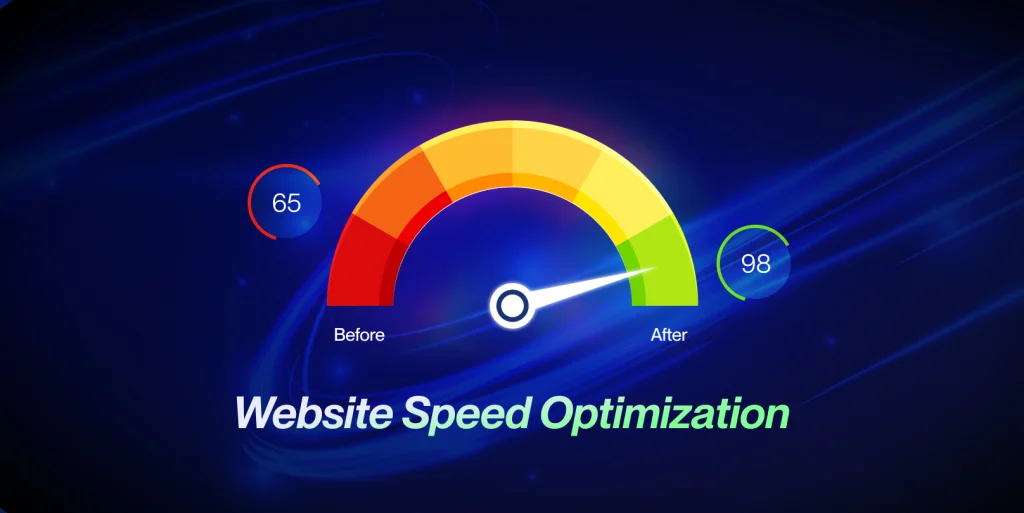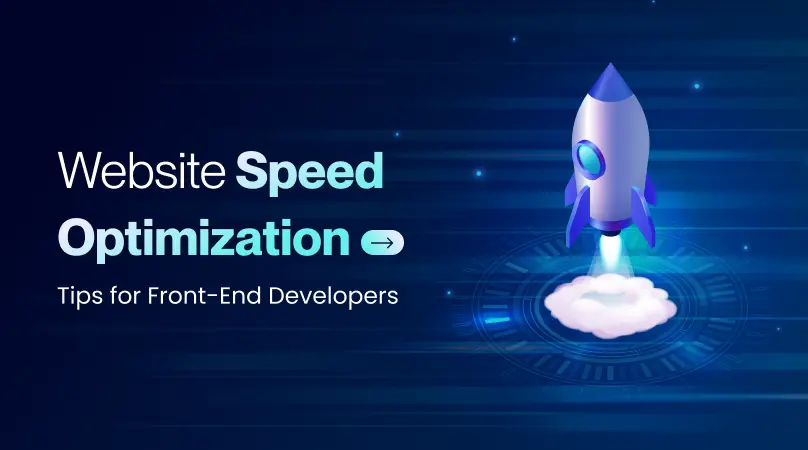40% of the users leave the website if it doesn’t load within 3 seconds. This tells you the whole story of how important it is to optimized the speed of your website.
Why do we create websites?
Of course for people to use it.
But they will get frustrated if the website take too much to load. And they will eventually leave the website. No business wants that, Right?
So, if you own even a small business or run a big one, You need a digital presence. A presence that showcases your authenticity. And as per statistics 70% of the customer says that the speed of website loading impacts their decision with the brand.
So, It is super crucial for your website to load quickly. Either if you are a front-end developer who wants to learn more about speed optimization, Or a business owner who wants to have a good knowledge about it to guide their team, This detailed blog post is perfect for you. So, let’s delve into it.
What Are The Most Crucial Factors in Website Optimization?
If we talk about the most crucial factors in website optimization, Then there are plenty. Like LCP ( Largest Contentful Paint), FCP ( First Contentful paint), TTFB (Time To First Byte) and page load time. So, let’s understand each and every aspect. And how to manage these factors perfectly.
1. LCP (Largest Contentful Paint): It analyses the time of the largest content of the website to load completely in the website.
2. FCP ( First Contentful paint): This metric shows the time between the page start loading and till showing anything on the screen.
3. TTFB (Time To First Byte): A time between users’ request and getting the first byte from the server. It shows the speed of the server.
4. Page Load Time: It is the whole time which the website takes to load completely and allow users to interact.
5. Total Blocking Time ( TBT ): The time which is taken to block the main thread and block the user from doing any kind of interactivity with the website.
6. CLS ( Cumulative Layout Shift ) : It tracks the layout shifting of websites during loading.
4 Best Tools to measure Website Performance
1. Chrome Dev tools: A tool that is in-built in google chrome, That helps the developers to track down the issues and performance of the website.
2. Webpage Test: A tool that provides all the in-depth performance mertices, Charts and suggestions to make the website speed better.
3. GTmetrix: A tool that analyses and provides results of your websites’ speed. It collects the data from both Google Lighthouse and Webpage test and also show suggestions to make those aspects better.
4. Google Lighthouse: Google Lighthouse is a tool that is integrated in the chrome dev tools to audit the performance, SEO, And accessibility of the website. And it also provides a comprehensive report and suggestions to make the overall performance better.

7 Effective Strategies to Optimize Website Speed
1. Decrease the HTTP requests:
To decrease the HTTP requests, You have to combine multiple CSS, And JS files into one. And to do this process easily and smoothly you can use tools like Gulp, Or Webpack.
2. Image Optimization:
Firstly, for optimizing images you have to make the size of images smaller, Of course without even losing its quality. And to compress images without affecting its graphics, You can use tools like, TinyPNG and ImageOptim.
Secondly, You should adjust the image sizes for different devices and make them responsive. So, if someone opens the website on a mobile device smaller images will load and it’ll improve the website speed.
Thirdly, You can also set images to lazy load. It means that the images will only load when they enter the viewport. Loading =”lazy” attribute will help you do that easily.
3. Use Web Fonts Efficiently:
To use web fonts efficiently, Using modern font formats like WOFF2 is perfect. Because it is compressed and ideally optimized as per the web to reduce the load time of the website.
Front-end developers should also load fonts asynchronously, This will divide the load and will eventually help the website load time to reduce.
4. Optimize CSS and Javascript:
Javascript Optimization:
For Javascript optimization you can use Obfuscation and Minification. Using tools like UglifyJS for magnification which will remove the comments, Unnecessary space and characters to make your Javascript code smaller. While the Obfuscation scrabbles your JS code and makes it even hard to understand, Which is very efficient practice to add a security layer in your code.
Thes second strategy is Tree Shaking which means removing unused code from Javascript files. And you can do this by using Webpack to optimize your code.
Thirdly, Front-End developers should use code splitting to break the code into multiple sections which would load on demand. And this can also be done with Webpack. Also, you can also optimize Javascript by loading its files asynchronously.
CSS Optimization:
Just like Javascript you can reduce the size of your CSS files by removing unnecessary space, Characters and reducing the file size. And to do that, You can use CSSNano.
Front-end developers should apply critical CSS above the part of the web page that is visible without scrolling to make it load faster.
Using the modern CSS methods like GRID and FlexBox makes the CSS code efficient and helps in website loading.
5. Implement Techniques for Caching:
Implement Service Workers, These are the scripts that run in background and intercept with network, allow cache resources and make the offline access possible. By this the server requests will be less and it would make a good impact on the website speed.
Use Cache-Control Headers, This is a strategy in which the assets of the web pages store on the device of the users. And this reduces the server request that makes the website speed faster.
Developers should consider using CDNs. These are the network or servers that are distributed globally and have copies of the static content of your website, Like JS, CSS files and images. So, when the request happens the website will be loaded from the nearest server, Which will reduce the loading speed of the website.
6. Make your Rendering Performance better:
Reduce the workload of the Main Thread by keeping it away from heavy tasks to make the rendering fast. Also, Long and complex functions of Javascript should be simplified with smaller ones. And sizes of CSS code affects the load time significantly to manage it better, Above I’ve already mentioned some key steps for CSS optimization.
Front-end developers should consider using React and Vue because they both have virtual DOM. Also, use some incredible state management libraries like( Redux, Vuex). These state management libraries eliminates the need of using complex state handling and decreases the number of re-renders required, Which is best for less code, Which is eventually led to better website speed.
7. Use Responsive and Adaptive Designs:
Responsive and adaptive designs are really crucial, Because more people open websites on mobile than on desktop. So, the Front-end developers should use the design that could be made responsive easily. And to make the load speed even faster on mobile devices, Compressing images is also really helpful.
Conclusion:
Website optimization is really crucial for any type of business. And that’s why front-end developers should know the efficient strategies that will reduce the load time of the website, Make the rendering faster and give users the perfect experience.
Some efficient strategies are:
- Decrease the HTTP requests
- Image Compression and Optimization
- Using web fonts efficiently
- Optimize CSS and JS
- Implement cache techniques
- Make rendering performance better
- Use responsive and adaptive designs.


 Mobile App Development
Mobile App Development UI/UX
UI/UX E-commerce Development
E-commerce Development AI/ML Development
AI/ML Development QA
QA